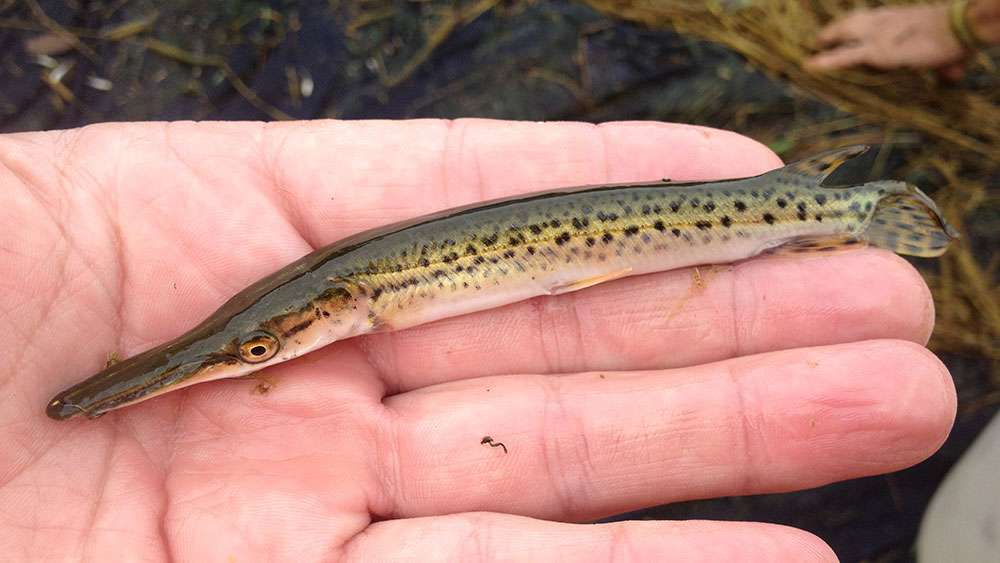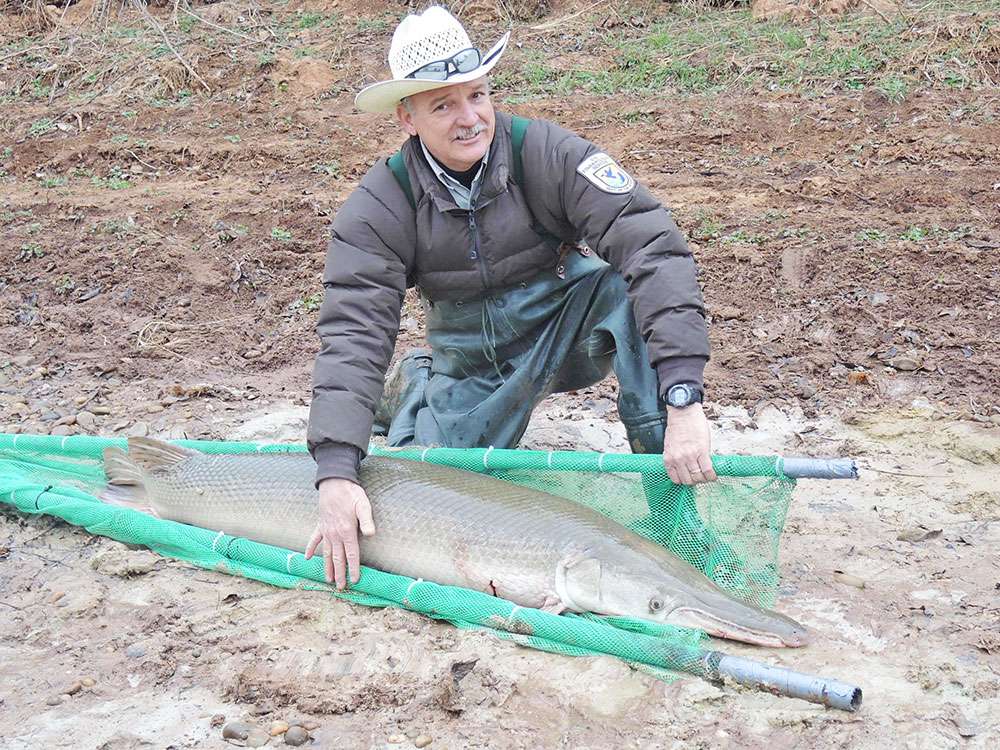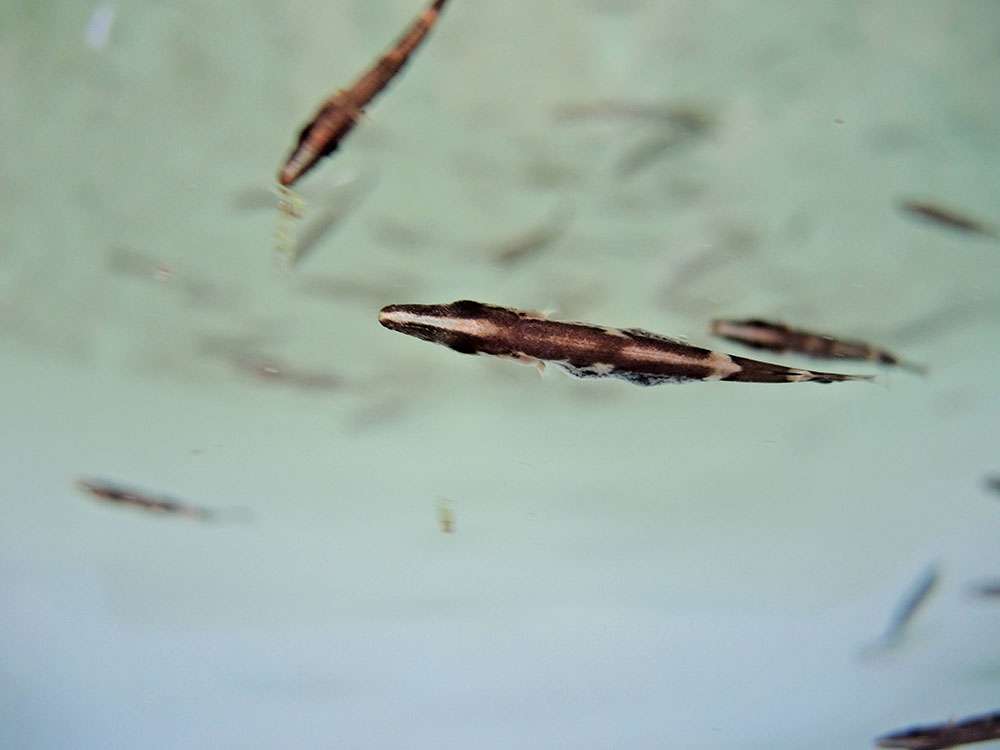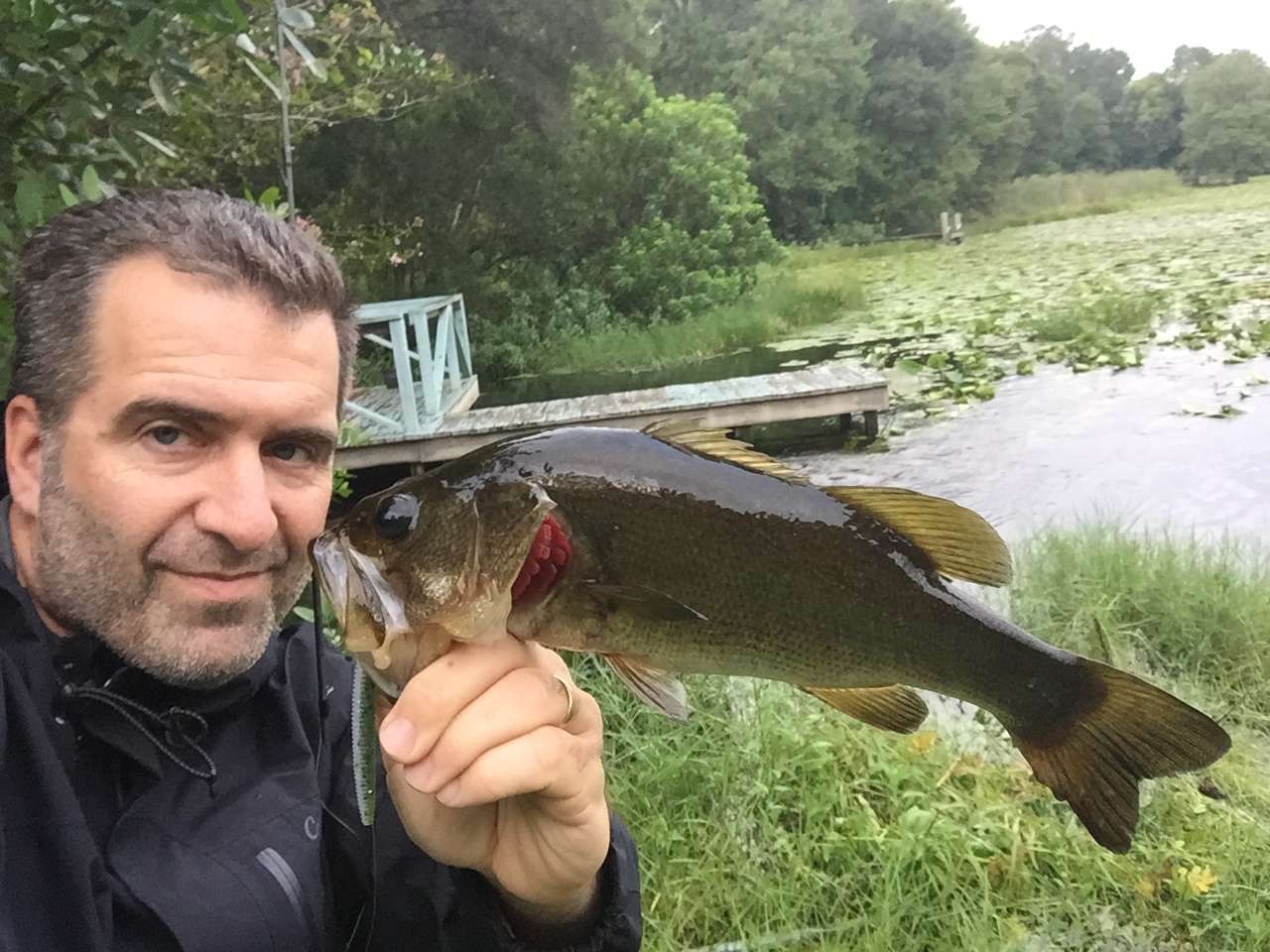
It’s not like there’s a new sheriff in town; it’s more like a deputized P.R. agent. We’re talking about the movement to reintroduce alligator gar into areas of the species’ historic range where habitat lost to man’s engineering brought about localized extinction several decades ago.
Some 50 years ago, these prehistoric giants roamed throughout the Mississippi River Valley from the Gulf Coast to Iowa to Illinois. Today, a lot of these waters are infested with invasive Asian carp and hopes are high that reestablishing alligator gar populations will mow down the intruders.
That’s an interesting premise — one with immediate and long-term considerations. For insight relevant to bass tournament anglers, we sought the input of B.A.S.S. Conservation Director Gene Gilliland.
Having spent 32 years in the Oklahoma Department of Wildlife Conservation, he knows well the destructive potential of Asian carp. Both silver and bighead varieties reproduce at alarming volume, aggressively compete for food with native forage species and disrupt sport fish spawning habitat.
“In my home state, we’re scared to death that the carp will reach Lake Texoma (via the Red River), which has a world-class striped bass fishery,” Gilliland said.
Wreaking havoc on bass populations wherever they’ve appeared, Asian carp have been on a northward march toward the Great Lakes with little more than electric barriers between them and some of the nation’s premier smallmouth fisheries.

Plan of attack
Since 2010, the U.S. Fish and Wildlife Service has coordinated the stocking of alligator gar spawned at the Private John Allen National Fish Hatchery in Tupelo, Mississippi. This newfound popularity starkly contrasts the gar’s inglorious past when unfounded views on their consumption of sport fish gave ill-advised anglers a shoot-on-sight mission.
Currently existing in Mississippi River tributaries throughout the southern states, alligator gar can reach 7-plus feet and push the 300-pound mark. Sporting powerful jaws bristled with needle-like teeth, alligator gar certainly appear menacing enough to threaten invasive carp.
But will efforts to control the carp plague with southern-spawned predators prove successful? The jury’s still out, but Gilliland minced no words.
“No way,” he bluntly stated.
From a predatory standpoint, an adult gar would have no trouble taking out a decent-sized carp, while juveniles are easy pickings. However, species nuance confines the gar’s formidable ability to impact an overwhelming problem.
A hill too steep
Assuming that southern-born alligator gar adjust well to the climate and water conditions of their new homes, Gilliland points to the inescapable ecological factors.
“Asian carp are extremely prolific; alligator gar, on the other hand, are not a prolific species,” he said. “They take a long time to mature and they have very large home ranges, which means they don’t have big populations, even when there are strong populations of them.”
An effective control species, Gilliland said, would need to have huge numbers of voracious fish gobbling juvenile carp before they can grow too big for predators. Willing as they may be, alligator gar are likely to be outpaced by the exotic invasives.
“If you have a lot of Asian carp out there that are 20-60 pounds, even alligator gar are not going to be able to control something like that,” Gilliland said.
For clarity, Gilliland’s dissing neither the notion of carp-chomping gar, nor those pursuing it. Who wouldn’t want to see a giant, toothy fish of ancient design ravaging carp with ferocity rivaling the great whites of South Africa’s Seal Island?
It’s just not going to happen often enough.
But maybe there’s a larger point; one that leverages the alligator gar’s personality as well as its physical prowess.
Purpose and perspective
The sport-fishing value of a giant fish with a sinister smile is pretty intriguing, particularly for bow-fishermen.
“I think the people who are encouraging the idea or reestablishing alligator gar are doing it for the gar, not to control the carp,” Gilliland said. “Yeah, they might eat some carp, it makes everyone think they’re doing a good job, but in the long run, is it going to help? It’s going to be a Band-Aid.
“This has gotten some play in the press because the alligator gar is a charismatic species. It’s something the pubic can relate to. Here’s this gigantic fish that grows to be 100-something years, and it happens that they’ll eat these Asian carp.”
Gilliland notes that getting these slow-growing fish to trophy size will require patience, conservative regulations and habitat enhancement efforts between local authorities and the U.S. Army Corps of Engineers to ensure sustainable spawning habitat.
He’s simply not buying the notion of using gar to wage an unwinnable war.
“I think the carp problem is much too big to think that alligator gar are going to save us from the invasion,” Gilliland said. “We’re going to have to find other solutions to the carp problem.”
One potential solution, Gilliland notes, is commercial fishing; an option dependent on developing sustainable demand for these fish with profitability sufficient to keep the netters in business.

The Takeaway
Public relations folks often say that any press is good press. That’s how Gilliland summarizes the alligator gar restoration effort.
“This is probably not going to work as far as controlling Asian carp, but if it brings more attention to the problem and how destructive they can be to our rivers and ecosystems, then that can be a good thing,” Gilliland said. “The real focus needs to be on how do we prevent Asian carp from spreading, how do we try to manage the places where they already exist and what are we going to do to keep them from taking over and decimating all the other native species in those waters.
“In my view, that is one of the top two or three threats to the future of our bass fisheries in many parts of this country. If we can come out of this with greater awareness of the invasive species issue, then that’s a good thing.”





